Table of Contents
Love Valley
Monk’s Valley
Summary
Love Valley
Love Valley is a magnificent natural wonder located in Cappadocia, Turkey, that has become one of the most popular tourist destinations in the region. We recently had the opportunity to visit Love Valley and were left in awe of the stunning rock formations, breathtaking scenery, and the rich history and folklore of the area.
 Panoramic view of Love Valley from a high viewpoint
Panoramic view of Love Valley from a high viewpoint
Love Valley is named for the phallic-shaped rock formations that dominate the landscape. These geological wonders, called “fairy chimneys,” are the result of millions of years of wind and water erosion. The fairy chimneys are formed from layers of soft volcanic ash and tuff, which were covered with harder basalt rock. The soft tuff layers eroded faster, leaving behind the unique shapes that have made Love Valley famous.
The fairy chimneys have been a source of fascination for visitors to the area for centuries. In ancient times, the Hittites, Persians, and Romans all lived in the region and carved their homes, churches, and underground cities into the rock formations. Later, in the Byzantine era, Christian monks settled in the area and built monasteries and churches into the soft tuff. Today, visitors can explore many of these ancient structures and marvel at the intricate frescoes and carvings that adorn them.
One of the most fascinating aspects of Love Valley is the history and folklore surrounding the area’s “wishing trees.” These trees are found throughout the valley and are adorned with colorful ribbons and cloth strips.
According to local legend, tying a ribbon to a wishing tree and making a wish will bring good luck and prosperity. Visitors from around the world come to Love Valley to make their wishes, and the trees have become a symbol of hope and optimism for many.
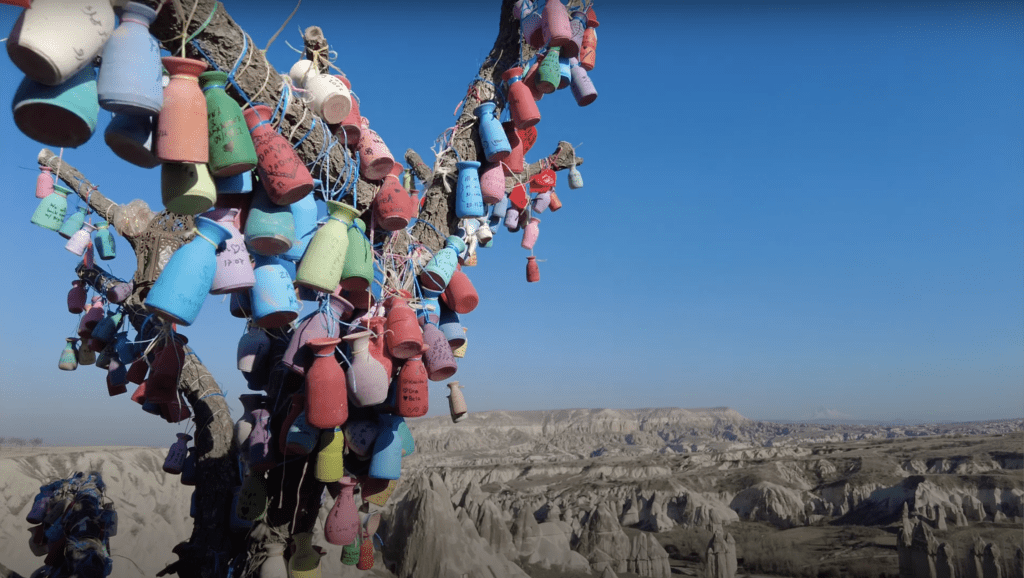 A wishing tree with Love Valley in the background
A wishing tree with Love Valley in the background
Our family spent a full day exploring Love Valley, taking in the stunning scenery, and learning about the area’s rich history and folklore. Unfortunately, we were not able to hike down the valley and see the fairy chimneys up close, because it was difficult to get down on foot. However, we did get to admire the views of the fairy chimneys from one of the viewpoints.
 Lots of people lining up to get on the swings
Lots of people lining up to get on the swings
One of the highlights of our visit was buying little ceramic ornament and tying it to the wishing tree. Bethany wrote “Have a great 2023! – Family Abroad, from Beth, Edith, Don, Natalie, and Nathan” and we hung it on one of the wishing trees.
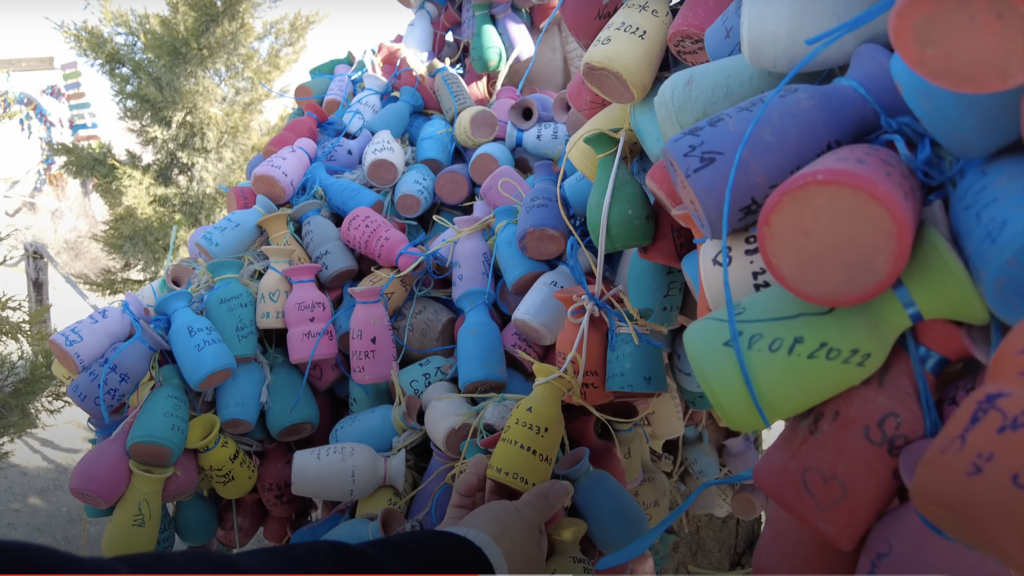 Our little ornament (in yellow) that we hung on the wishing tree
Our little ornament (in yellow) that we hung on the wishing tree
Pasabag Valley (Monk’s Valley)
During our trip to Cappadocia, we also had the opportunity to explore Pasabag Valley, which is home to some of the most unique rock formations in the region. Pasabag Valley, also known as Monks Valley, is famous for its mushroom-shaped fairy chimneys, which look like they were pulled straight out of a fairytale.
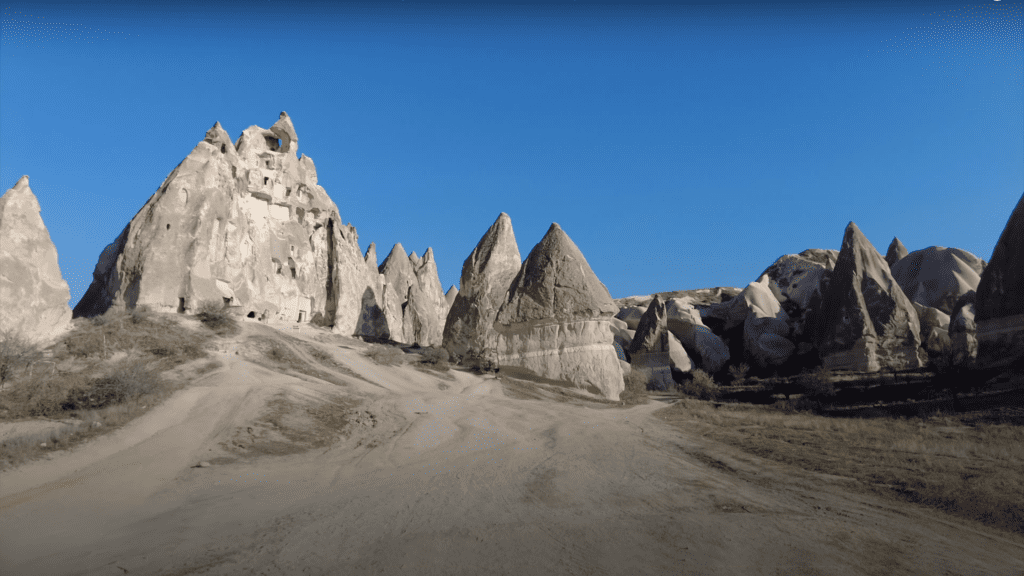 Mushroom-shaped fairy chimneys of Monks Valley
Mushroom-shaped fairy chimneys of Monks Valley
As we approached the valley, we were greeted by the sight of dozens of tall, cone-shaped rock formations rising up from the earth like giants. The fairy chimneys in Pasabag Valley are particularly unique because of their distinct “mushroom” shape. Each one has a tall, slender stem and a wide, rounded top that resembles the cap of a mushroom. On the other hand, Love Valley is famous is for, and gets its name from, its phallic-shaped rock formations.
 Unique “mushroom” shaped rock formations
Unique “mushroom” shaped rock formations
Like Love Valley, Pasabag Valley was formed over millions of years through wind and water erosion. The formation of the fairy chimneys in Pasabag Valley is a result of millions of years of geological activity. The mushroom-shaped caps were formed by a harder layer of rock that protected the softer layer beneath it from erosion, creating a “mushroom” or “tent” shape.
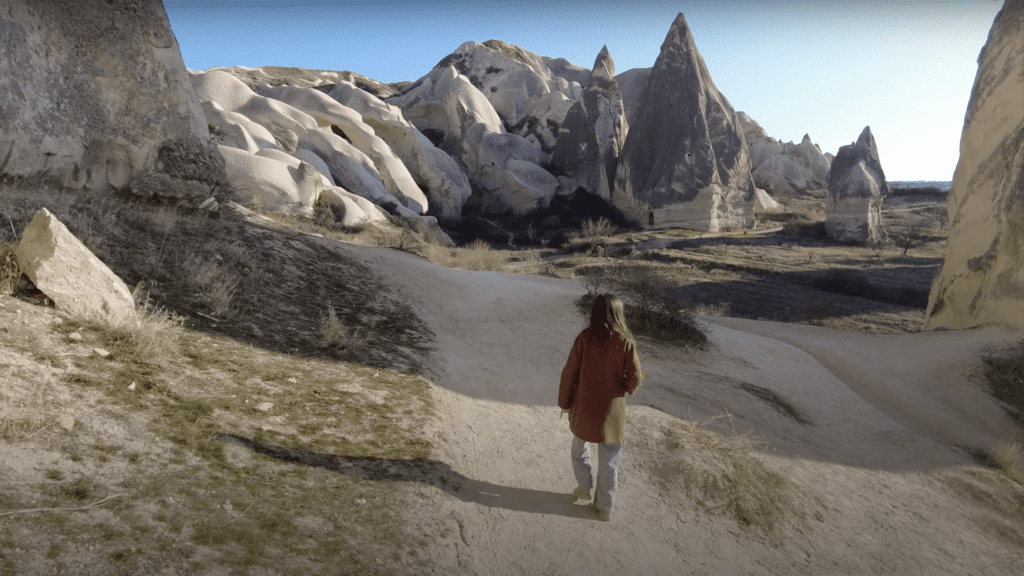 Bethany walking through Monks Valley
Bethany walking through Monks Valley
As we hiked through the valley, we marveled at the intricate shapes and colors of the fairy chimneys. Some were tall and thin, while others were wider and more bulbous. Some had multiple cones stacked on top of each other, while others had holes and tunnels carved into their sides.
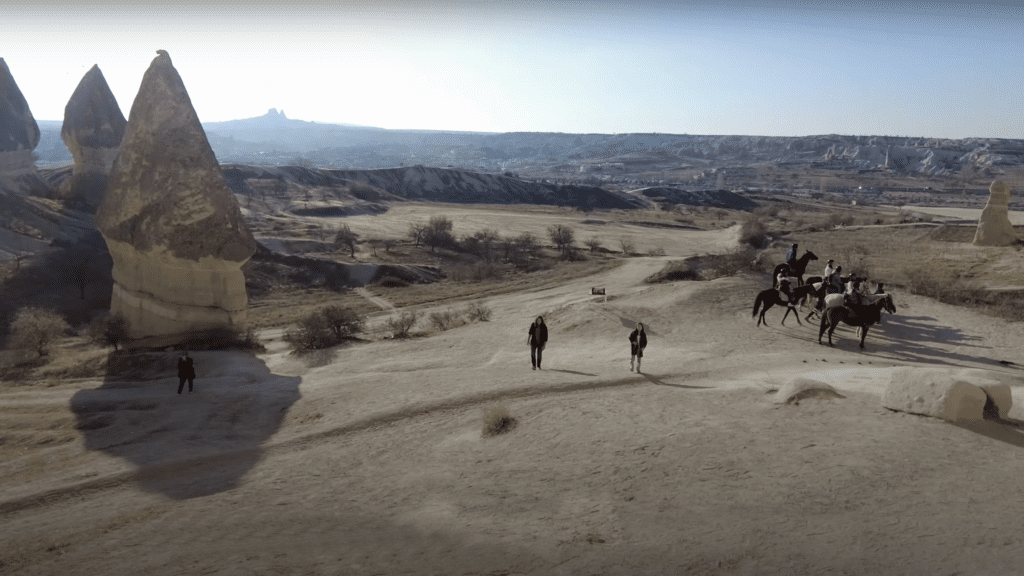 Edith, Nathan, and Bethany hiking up Monks Valley
Edith, Nathan, and Bethany hiking up Monks Valley
As we explored the valley, we also had the opportunity to visit a few of the ancient caves that had been carved into the fairy chimneys.
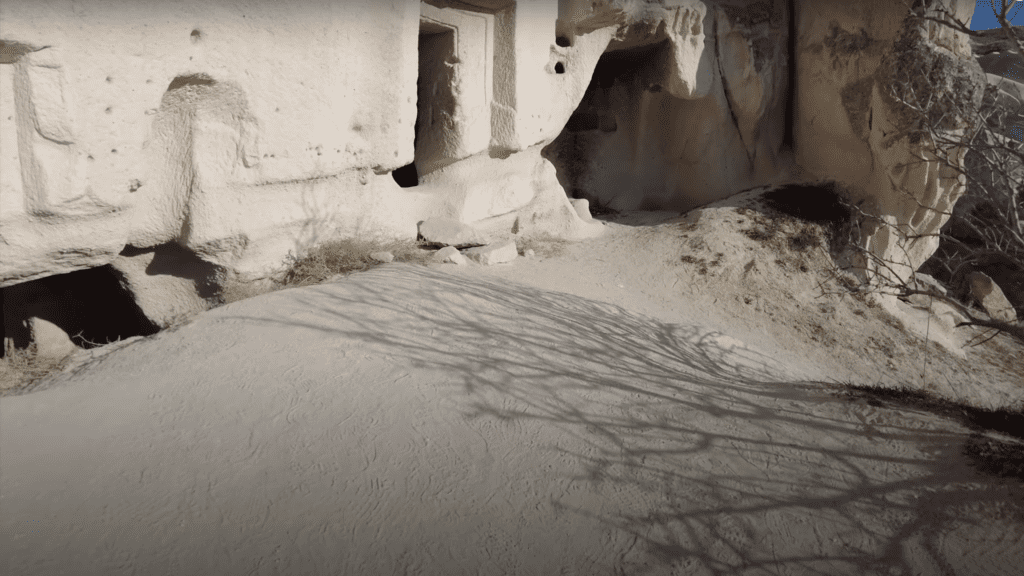 The entrance to one of the caves we explored
The entrance to one of the caves we explored
The caves were surprisingly spacious, with multiple rooms and even chimneys for ventilation.
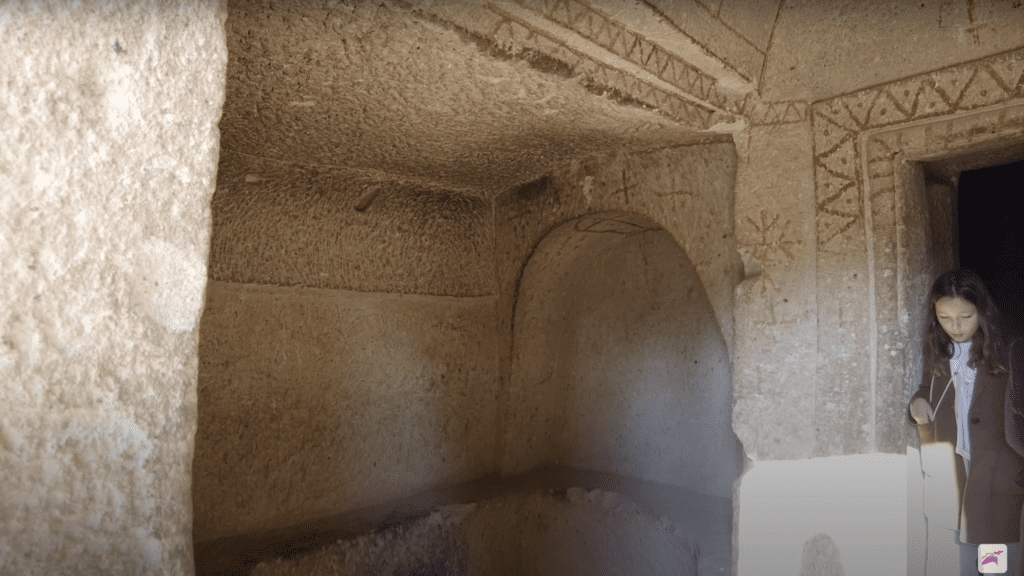 Part of the interior of one of the caves
Part of the interior of one of the caves
They were once used by early Christian monks as places of worship and refuge, and some of them were adorned with intricate frescoes depicting scenes from the Bible.
Summary
In conclusion, our family trip to both Love Valley and Pasabag Valley in Cappadocia was an unforgettable experience. The fairy chimneys and ancient caves were a testament to the incredible natural beauty and rich history of the region, and we felt incredibly fortunate to have had the opportunity to explore this unique and fascinating landscape.
If you ever find yourself in Cappadocia, be sure to put both Love Valley and Pasabag Valley on your list of must-see sights – you won’t be disappointed!
WATCH THE FULL VIDEO HERE
Like this post? Pin it on Pinterest!

